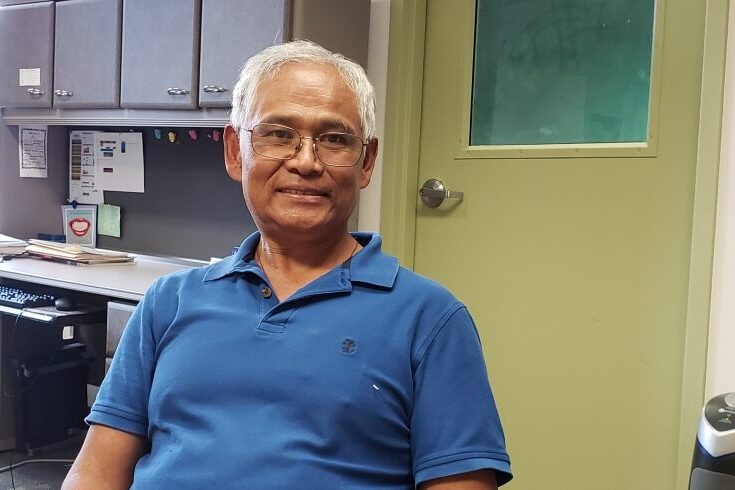 Imagine moving to a foreign country with only $100.00 in your wallet. In some countries, that amount could cover a lot of essentials. In other regions, you might not make it out of the airport.
Imagine moving to a foreign country with only $100.00 in your wallet. In some countries, that amount could cover a lot of essentials. In other regions, you might not make it out of the airport.
Now imagine those dollars are words. Specifically, words belonging to the native language spoken in that foreign country. How far could you get on a 100-word budget?
Researchers estimate that native English speakers know anywhere from 27,000 to 52,000 words. Imagining those words as dollars helps illustrate the freedoms people can either enjoy or lack, depending on their verbal budget.
When Ngima Sangay Sherpa briefly visited the U.S. from Nepal in the late 1990s, he had next to zero words. To this day, Sangay remembers spending a lot of time nodding his head while having no real idea what people were asking or telling him.
Sangay grew up in a small village so remote that reaching it necessitated a two-day bus ride, plus a three-day walk from the nearest city. When he immigrated to the U.S., Sangay left behind his family, including his six siblings and his six children.
“My first wife passed away…a long time now,” Sangay softly confesses. “Fifteen or sixteen years ago.”
When recalling his early years living in the U.S., Sangay can sum up his experiences in one word, “Difficult.” He goes on to explain, “It was difficult without English. It is difficult just [to] say something. And so difficult to understand what they are answering. I couldn’t write. I couldn’t speak. But now I can write. I can speak. Because in just three years, I learn a lot at this school.”
The school he refers to is the Adult Education Center’s Durango campus. Sangay enrolled in the English-as-a-Second-Language (ESL) program at his second wife’s urging. Although she was a local Durangoan who did not speak any of Nepal’s 122 recognized languages, she and Sangay built a relationship despite communication barriers.
Initially, the thought of attending English classes intimidated Sangay. He did not want strangers judging his limited vocabulary or strong accent. In spite of these worries, Sangay showed up for class. “I tell myself I have to learn. I have to do it,” he says.

“What I enjoy most about class is learning. I like to learn more, writing more, speaking more. My habit is learning and forgetting. That is a bad habit of mine,” he laughs.
As Sangay’s word budget expanded, so too did his craving for new opportunities. For instance, he wanted health insurance and other benefits not provided by the typical food service occupations available to him. He also wanted a job with diverse challenges to tackle. One day, while Sangay chatted with his ESL teacher, Michelle Hall, he mentioned his career goals. Michelle tag-teamed with the DAEC’s Program Director, Libby Baumchen, and soon after, they had sleuthed out a job opening matching Sangay’s criteria.
Sangay applied and secured his new career path. He says, “I’m so happy. I work in an elementary school in Durango. I am [a] custodian. I clean up the school.”
When asked if learning English has changed his lifestyle, Sangay points out that while he is busy with work and school, he is more comfortable getting out among other people. “This school helped me get that,” he notes.
When asked if learning English has changed his relationship to his wife, he smiles and nods heartily, “It’s great!”
And Sangay’s aspirations have continually expanded. He recently applied for a promotion to be the elementary school’s building technician. The position would take him off night shifts, and instead of being alone in the building, he’d get to practice his English more by talking with the students and the teachers.
Sangay says, “My goal is looking for jobs that are harder and harder. Learning more experiences.”
To anyone feeling intimidated about learning English, Sangay offers frugal, no-nonsense advice, saying, “We have to do it. We have to study. We have to learn.” He pauses to think a moment. And, like someone who just found spare change stashed in a back pocket, Sangay lights up and offers a few more words, “I enjoy everyone here. They are so nice. Everybody’s nice here.”
Registration for ESL classes in Cortez and Durango spans January 3rd – 19th, 2022. For more information, contact Sarah Brown, Lead ESL Teacher, at 970-385-4354, ext. 24 or email sbrown@durangoadulted.org.
Money photo by Tim Sullivan on StockSnap


